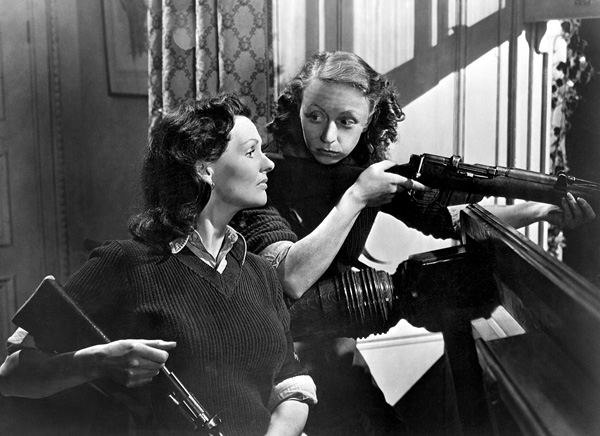|
Reviews of Recent Independent, Foreign, & Documentary Films in Theaters and DVD/Home Video

WENT THE DAY WELL? (1942)
The plot’s as high concept as anything John Milius (Red Dawn) could come up with: a provincial English village is taken over and held hostage by a German fifth column, the members of which blend in so well that you can’t tell always tell who’s who. There’s the comforting presence of the grandfatherly vicar; his dutiful spinster daughter; the busybody general store proprietor, who also mans the telephone switchboard—she knows everyone’s business; the haughty aristo matron; and a daffy maid named Daisy (what else?), to mention several. They’re straight out of a comedy from Ealing Studios, which, in fact, made the film. Who needs character development when the fate of the free world lies within this hamlet of Bramley End? This is literally “Little Britain.” All of the townspeople, from the nosey cockney boy to a slippery rabbit poacher, collectively function as one cohesive unit against the invaders, save for one deadly double agent. (The title derives from a World War I-era epitaph by John Maxwell Edmonds, “Went the day well?/We died and never knew,/But, well or ill,/Freedom, we died for you./Went the day well?”) Based on and freely adapted from a story by Graham Greene, the plot unfolds with blitzkrieg speed. It doesn’t take long for the rural gentility to be coldly gunned down, and as you wonder who will live or die, the film becomes something of a precursor to a 1970s disaster movie. Its level of violence would probably be rated PG-13, but the bluntness of the killings still shocks, even without blood and gore and though many of the deaths occur off screen. (During the screening, I heard at least three gasps, four if you include my own.) Possibly even more discomforting, the villagers—young and old, male and female—shed any moral ambivalence and get primal, and in the case of two young women, with video-game zeal. The filmmakers ease some of the tension with a cheery prologue—though by the middle of the skirmishes you’ll probably have forgotten it as one tense sequence follows the next, drawing out the suspense. (Co-screenwriter Angus MacPhail is credited with inventing the term, “MacGuffin,” and that device is well played here.) With a background in Depression-era documentaries, the Brazilian-born Cavalcanti made his feature film debut here, and his output then ranged from film noir to 1947’s Nicholas Nickleby. His They Made Me a Fugitive (1947), with Trevor Howard, was also recently restored by the British Film Institute and played internationally. With its
affection for English archetypes, this is a remarkable mixture of humor
and pulp. The Germans may at first come off as a caricature of a robotic
killing force, crushing the village without remorse or mercy, but Erik
Larson’s new bestseller, In the Garden of the Beasts: Love, Terror,
and an American Family in Hitler’s Berlin confirms that this 1942
portrait of Nazi aggression is on the mark. Devoid of its morale booster
shot, the film may have even more of an impact now that we have the
hindsight of history.
Kent Turner
|

